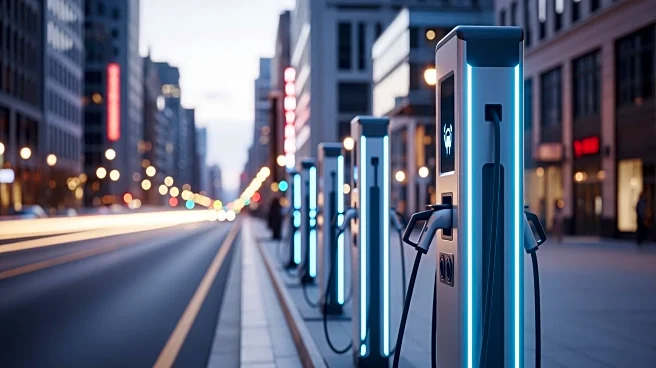What's Happening?
Pacific Gas and Electric Company (PG&E), in collaboration with Nissan, Fermata Energy, and the Schatz Energy Research Center, has successfully demonstrated vehicle-to-grid technology at the Redwood Coast
Airport Microgrid in McKinleyville, California. The project integrates two Nissan Leaf vehicles equipped with CHAdeMO quick charge ports and Fermata Energy’s vehicle-to-everything (V2X) platform, utilizing four bidirectional charging stations. This system provides automated frequency response capabilities for grid support and energy resilience. The discharged energy from the vehicles is used for energy management and to reduce electric bills for Humboldt County. The vehicles also participate in California’s Emergency Load Reduction Programme, generating revenue during grid stress events.
Why It's Important?
The demonstration of vehicle-to-grid technology represents a significant advancement in energy management and resilience, particularly in areas prone to grid stress. By integrating electric vehicles into the grid, PG&E and its partners are paving the way for more sustainable and efficient energy solutions. This technology not only helps in stabilizing the grid but also offers financial benefits to participants through revenue generation during peak demand periods. The project highlights the potential for electric vehicles to play a crucial role in future energy systems, supporting both environmental goals and economic incentives.
What's Next?
The success of this demonstration could lead to broader adoption of vehicle-to-grid technology across California and potentially nationwide. As more electric vehicles enter the market, similar projects could be implemented to enhance grid stability and energy efficiency. Stakeholders, including utility companies and vehicle manufacturers, may explore further collaborations to expand the use of bidirectional charging stations and V2X platforms. Additionally, policy makers might consider incentives to encourage participation in such programs, promoting sustainable energy practices.














